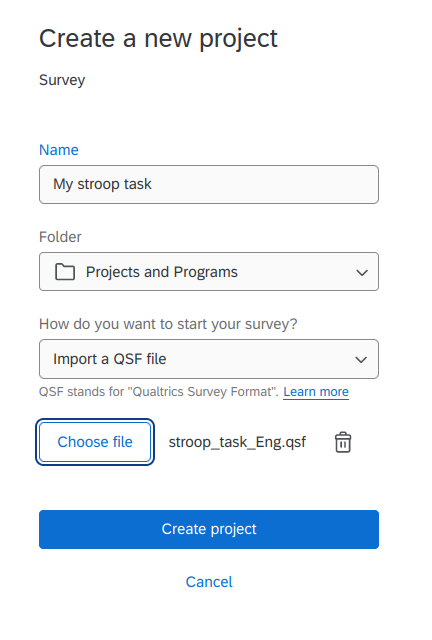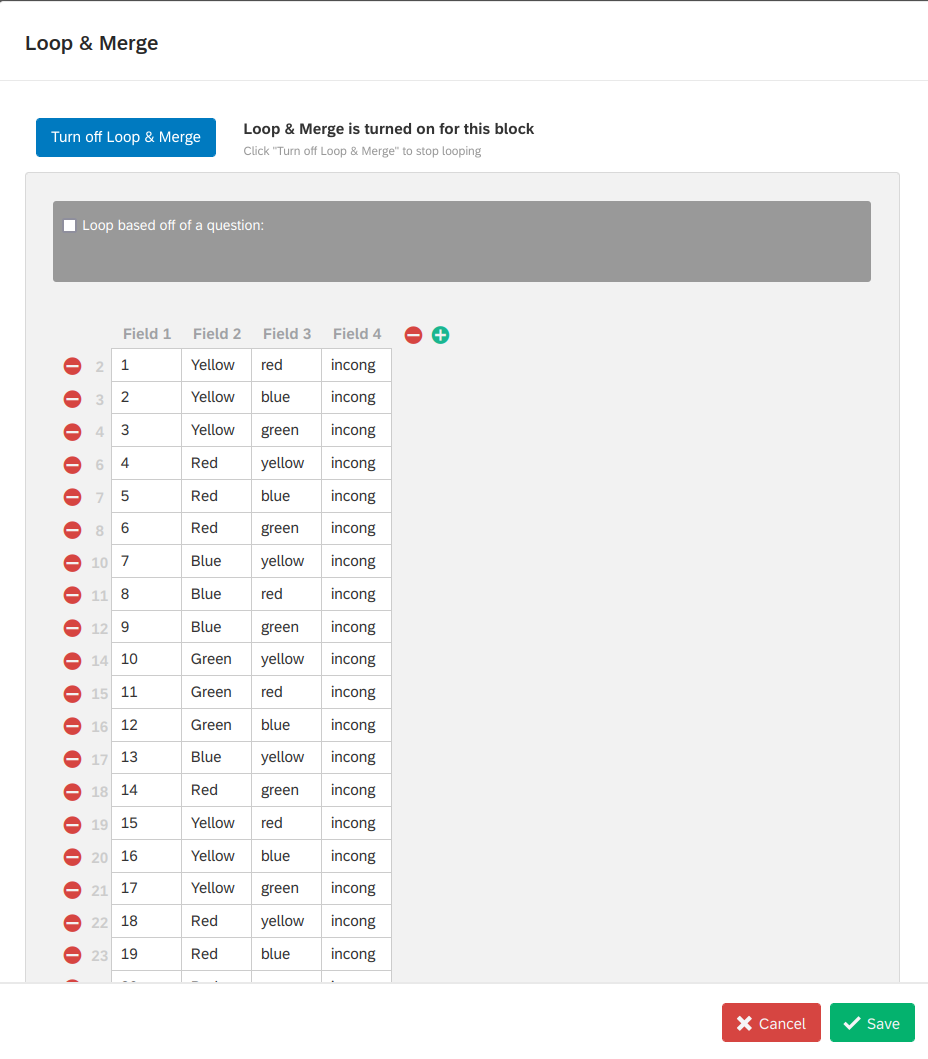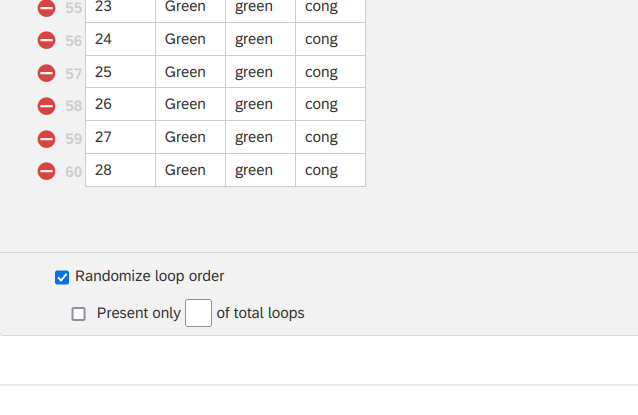Stroop Task
Marcello Gallucci
2023-06-12
Stroop Task
The Stroop test shows a series of color names colored with different colors. The participant should name (select in a multiple choices answer) the color of the font in which the word is shown. The words are presented with a congruent color (“Red” shown in red) in half of the trials, and in an incongruent color (“Red” in green) in the other half. Colors are red, blue, yellow and green.
In this implementation, 28 trials show congruent color-word trials and 28 incongruent ones. One can add or remove trials or duplicate the task for longer experiments.
The order of presentation of the stimuli is randomized.
The test is implemented with a minimum of javascript code. It does not require any JS library and does not depend on the format of the survey it is included.
Import in qualtrics
Download the stroop_task_Eng.qsf and login to your
qualtrics account. Create a new project and select the to import an QSF
file.

Choose your file and hit Create Project. If everything
goes as planned, your are ready to go.
Use it in an existing project
It is likely that you want to import the test into an existing project, with other tests and questionnaires. Due to some limitations in qualtrics system, you cannot save the survey into the library and import it in another project. This operation would not work because if you save a survey in the library, loop and merge setup of the survery will be lost.
Thus, simply import the task using Copy from Existing Survery function: Add a block, then

and then

Structure of the task
At the moment the task implements a block of 56 words (color names),
half congruent and half incongruent. The displayed words and their color
are defined in the loop and merge, in the
stroop stimuli block (second block).


Field 2 stores the word to be shown, the
Field 3 in which color should the word be displayed.
Field 4 indicates whether the stimulus was shown in a
congruent or incongruent color. The latter field is there to be saved in
the dataset.
Trials
The present implementation offers the minum set of trials. 4 colors,
each shown 7 times in an incongruent color and 7 times with the
congruent color. By adding rows to the Loop and Mege fields
one can increase or decrease the trials shown. Trials are randomized

An easy way to increase the number of trials is to copy the whole
block stroop stimuli.
Data

In the dataset, apart from other variable, the survey saves, for each
word-color pair N, the diplayed word N_stimulus, the
response time N_time_First Click, the color of the word
N_stroop_color and whether the color-word as congruent or
not N_stroop_cong. The other columns can be ignored.